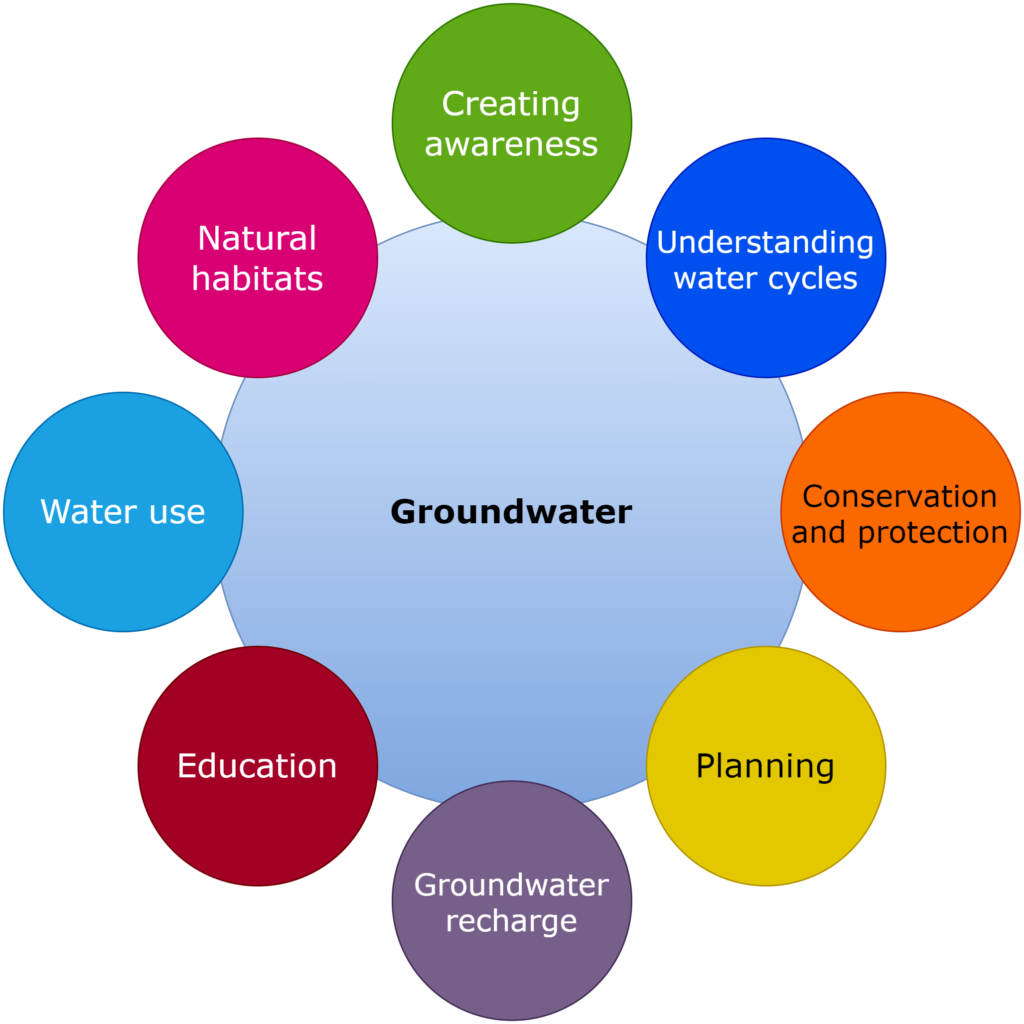As the world population grows, the demand for freshwater is increasing at an alarming rate, and groundwater is becoming an increasingly important source of drinking water. However, despite its importance, groundwater is often invisible to the naked eye, leading to a lack of awareness about its significance and the need for its conservation.
UNESCO has identified the importance of making groundwater visible in achieving the United Nations’ Sustainable Development Goals. It has launched a program called “Groundwater – Making the Invisible Visible” to raise awareness about the importance of groundwater and promote its sustainable management. The program aims to improve the understanding of groundwater resources, their role in the water cycle, and their importance for socio-economic development. It also aims to develop innovative solutions to manage groundwater resources sustainably and protect them from pollution and depletion.

Here are some of the reasons why making groundwater visible is crucial:
Creating awareness: Making groundwater visible can help create awareness among people about the importance of groundwater as a vital source of drinking water. It can help them understand that groundwater is not an infinite resource, and its overuse can lead to depletion, which can have severe consequences for the environment and human health.
Understanding water cycles: Making groundwater visible can help people understand the water cycle and how groundwater is a crucial component of it. It can help them understand how groundwater is replenished and the importance of maintaining a balance between recharge and discharge.
Conservation and protection: Making groundwater visible can help people understand the need for conservation of groundwater resources. It can help them identify areas where groundwater is polluted and take corrective measures to protect it. It can also help them identify areas where groundwater is being over-pumped and take measures to reduce the usage.
Monitoring: Making groundwater visible can help in monitoring the water table and assessing the health of the aquifer. It can help in identifying areas where the groundwater level is declining and take measures to recharge the aquifer. It can also help in identifying areas where the groundwater is contaminated and take measures to clean it.
Groundwater recharge: Making groundwater visible can help in identifying areas where groundwater recharge can be done to replenish depleted aquifers. It can help in identifying suitable recharge structures based on the soil and geological conditions.
Education: Making groundwater visible can be used as an educational tool to teach students about the importance of groundwater. It can help them understand the water cycle, the importance of groundwater in agriculture, and the need for its conservation. It can also help in spreading awareness among the general public about the importance of groundwater.
Tracking water use: Making groundwater visible can help farmers understand the importance of groundwater in agriculture and how to use it efficiently. It can help them identify suitable crops that require less water and adopt efficient irrigation practices. It can also help in reducing the overuse of groundwater in agriculture.
Natural habitats: Making groundwater visible can help in identifying areas where natural habitats depend on groundwater and protect them. It can help in conserving the species that depend on groundwater for their survival.
Planning: Making groundwater visible can help in better planning and management of water resources in a particular region. It can help in identifying areas where groundwater is abundant and areas where it is scarce. It can also help in identifying suitable locations for groundwater recharge structures and in developing a sustainable water management plan.
Visibility of groundwater can be achieved using innovative tools and technologies to make groundwater visible. These include remote sensing, geophysical methods, and modeling techniques. These tools can help in mapping the groundwater resources, identifying areas of groundwater recharge, and predicting the behavior of groundwater systems.
In summary, making groundwater visible is crucial for creating awareness, understanding water cycles, conservation and protection, monitoring, groundwater recharge, education, tracking water use, protecting natural habitats, and planning. It is essential to recognize the significance of groundwater as a vital source of drinking water and take measures to conserve and protect it for future generations.